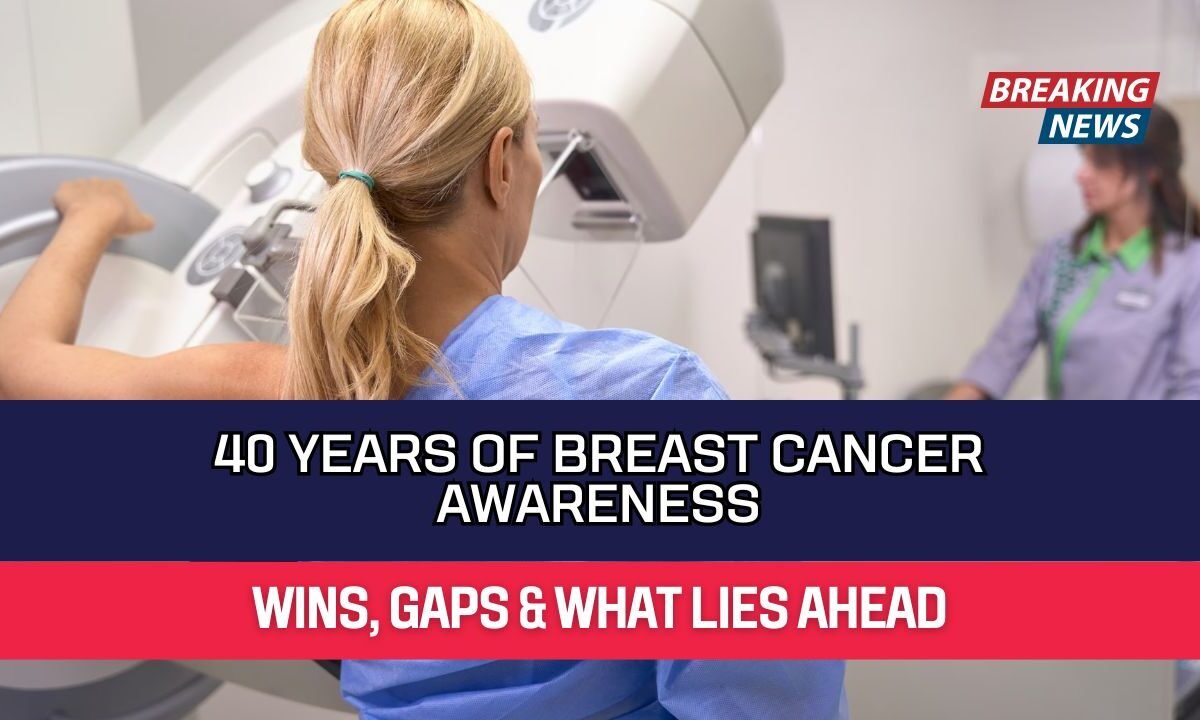This October marks 40 years of Breast Cancer Awareness Month—a special moment to celebrate how far we have come, and also to see how much still needs to be done. Over these four decades, doctors and communities have made real progress in fighting breast cancer.
But many families and survivors, especially in places with fewer resources, still face big challenges. Let’s look at both the successes and the gaps in this journey, and why awareness must keep growing everywhere.
Progress Over 40 Years
Since the first nationwide awareness campaign began in 1985, breast cancer survival rates have improved a lot. Thanks to better screenings, public education, and newer treatments, many more people now survive breast cancer.
According to the American Cancer Society, more than 517,000 lives have been saved in the U.S. over the past 40 years.
In the early 1980s, the five-year survival rate (the percentage of women who live at least five years after being diagnosed) was about 75 percent. Today, that number is over 90 percent.
This success comes from early detection, targeted therapies, improved hormonal treatments, and more personalized care.
Gaps in Care: Uneven Support & Survivorship Plans
Rural vs Urban Disparities
In places like Missouri, advanced medical services have not reached everyone equally. A study using Missouri’s BRFSS (Behavioral Risk Factor Surveillance System) data found that only 46 percent of breast cancer survivors reported receiving complete survivorship care instructions after treatment.
Women in cities or large towns were up to five times more likely to receive written care plans than those in rural areas. These written plans help survivors track follow-up tests, spot recurrence, and manage long-term side effects.
Missouri also ranks 10th in the nation for overall cancer death rates. For rural residents, the gap is wider because they have fewer medical specialists nearby and often travel long distances to reach treatment centers.
Local Level Challenges
In the Kansas City area, local clinics and health centers say awareness campaigns still help. While more women can now access mammograms, education about post-treatment care is still uneven. This is worse for women who don’t have a regular doctor or stable health insurance.
Today, over four million breast cancer survivors live in the U.S. Many deal with side effects after treatment. That’s why coordinated follow-up care is essential.
The Centers for Disease Control and Prevention (CDC) recommends that all survivors receive written care plans with their treatment history, follow-up schedules, and tips for a healthy life. Yet almost half of survivors still don’t get those plans.
Local Resources in Kansas City Area
Below is a table summarizing local clinics and support services in Kansas City (especially the Historic Northeast area):
| Provider | Services Offered / Notes | Contact Info / Notes |
|---|---|---|
| Samuel U. Rodgers Health Center | 3D mammograms (screening + diagnostic), on-site imaging, wellness & follow-up services | Phone: (816) 474-4920 |
| KC CARE Health Center | Women’s health exams, breast screening referrals, insurance navigation, care coordination | Main Line: (816) 753-5144 |
| University Health / UMKC / KCU Breast Health Center | Mammograms, diagnostic imaging, breast MRI, surgery, genetic counseling, coordination | Breast Health Center: 816-404-7830; Imaging: 816-404-0690 |
| University of Kansas Cancer Center / KU Health System | Breast cancer resources, survivorship plans, integrated care | KU Cancer Center: (913) 588-1227; Mammograms: (913) 588-6804 |
| Other Imaging Centers & Support Groups | Free or discounted mammogram vouchers, emotional/peer support (Gilda’s Club, Turning Point) | Check websites for event schedules and eligibility |
Tip: Most major health centers in the Kansas City area join the Show Me Healthy Women program, which offers free breast and cervical cancer screenings for people without insurance or with low-income status in Missouri. Always call ahead to check eligibility and services.
What Needs To Be Done Next
- Extend access to screenings in rural and underserved areas.
- Ensure every survivor gets a written care plan after treatment.
- Raise awareness among younger people, not just older women.
- Strengthen education and follow-up care in low-resource areas.
- Promote trustworthy information, community sharing, and support networks.
Over the past forty years, we have made huge strides in breast cancer awareness, detection, and treatment. Survival rates have climbed, and more lives are being saved than ever before.
But big gaps remain—especially in rural areas, for younger women, and among survivors who never get proper follow-up care. Awareness month is more than pink ribbons and walks.
It’s a chance to push for equal access to screening, support after treatment, and credible information for all.
In communities like Kansas City’s Historic Northeast, the mission remains: share stories, promote screening, and make sure no one is left behind—age or ZIP code should not decide your care.




